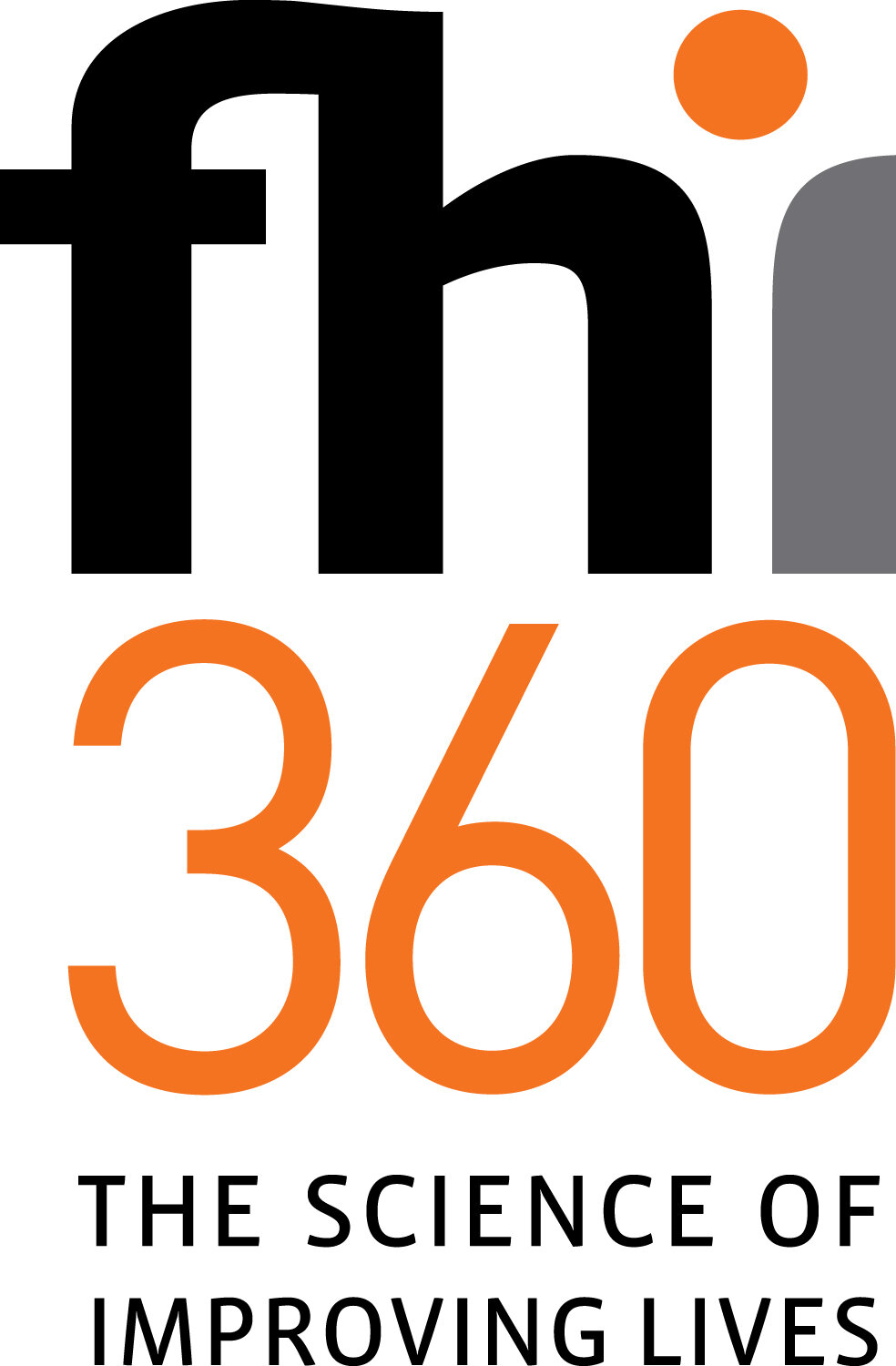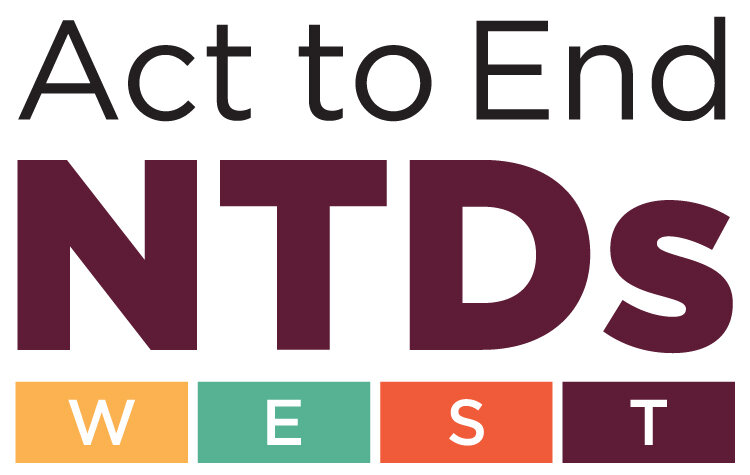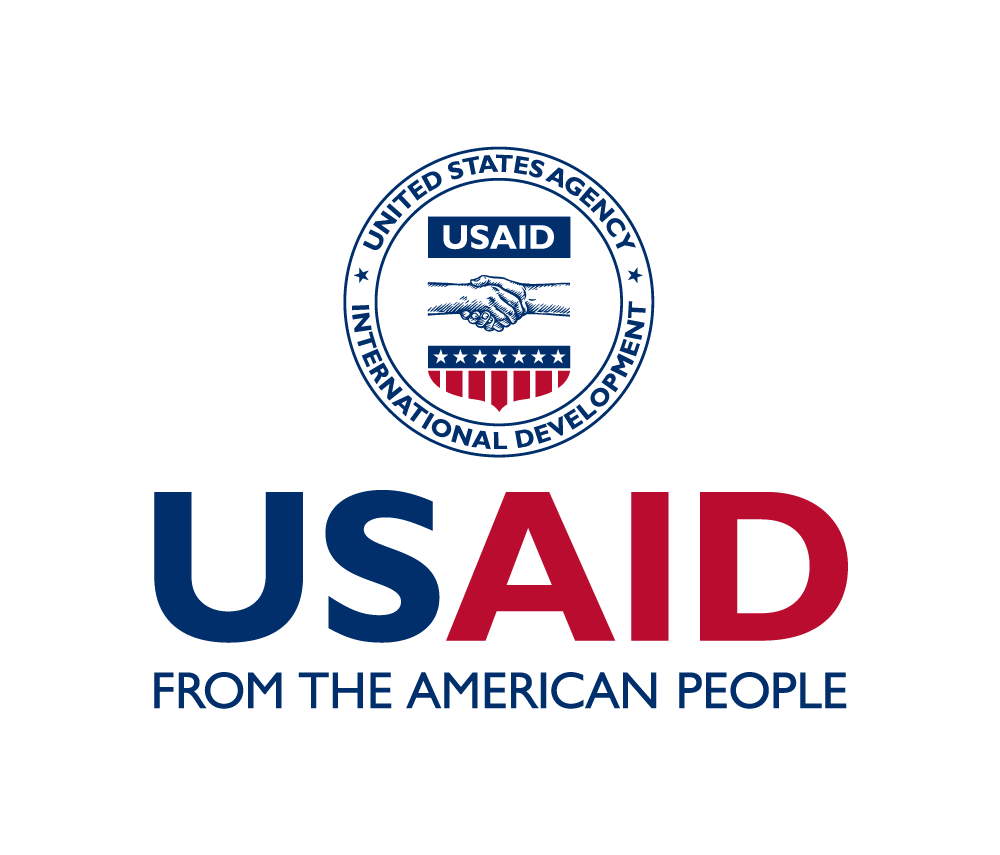Innovation is achieved through multiple approaches: some that introduce completely new tools and others that deploy existing resources in new ways. In 2019, the AIM Initiative, a program of American Leprosy Missions, explored this second innovation path as part of our work with The U.S. Agency for International Development’s Act to End NTDs | West Program.** We conducted situation analyses in Ghana and Côte d’Ivoire to assess programs related to lymphatic filariasis (LF) in Ghana, and both LF and trachoma in Côte d’Ivoire. While we included the typical literature reviews and quantitative assessments, we also adapted an existing situation analysis interview tool to document qualitative information, the cornerstone of our reports. This innovation highlighted the insights of different actors within and alongside each country’s health system, and produced critical information for strategic planning processes.
Above: The AIM Initiative team meets in Accra, Ghana with Act to End NTDs | West partners (Ghana Health Services NTD Program, World Vision and FHI360) to discuss collection and verification of NTD data in West Africa.
A situation analysis is the first step toward a country’s larger goals of disease elimination and health care accessibility. The analysis informs decision-making by highlighting the real, complex needs of health systems. For our 2019 reports, the AIM Initiative conducted dozens of interviews with the health workers, NGO staff, and officials who work most closely with people affected by NTDs in Ghana and Côte d’Ivoire, like this individual in Ankaful:
“I think the problem is the distribution and the accessibility and that is what we should look at if we are coming up with any intervention. Even if we are now going to take the capacity down to the facility level how do we use the existing one at the regional level and make that patient be able to access the care.”
- Key Informant Interview, NTD Program Staff, Ankaful, Ghana
We interviewed staff from different levels of Ghana’s and Côte d'Ivoire’s national health systems, as well as representatives from several NGOs working in LF and trachoma activities. The AIM Initiative utilized the World Health Organization’s (WHO) Morbidity Management and Disability Prevention (MMDP) Situation Analysis Tool as our questionnaire structure and addressed the following themes with the different respondents:
Health sector
Previous activities
Data system
Case finding
Treatment and MMDP
Health facilities
Community structures
NGO involvement
To make this tool more effective for our report, we made several important modifications:
We wrote additional questions, increasing the original 41 to 69 in order to thoroughly discuss data collection, quality, and systems with our interviewees.
We organized the questions into sets for use with different types of interviewees.
We adapted the framework--which is designed for LF assessment--so we could also assess trachoma activities in Côte d'Ivoire.
In this example of innovation, our team didn’t create a new product; we started with an existing tool, supplemented and modified it, and then applied it to new settings, resulting in a fresh approach. This yielded important results and new insights that might have remained hidden or unclear if we had followed more conventional steps.
Innovation on small scales like this still has profound impacts. Our methodology addressed the concerns of health workers and program staff, like the individual quoted above. It empowered those on the “front lines” fighting NTDs and amplified their voices. Now national health leaders in Ghana and Côte d’Ivoire can begin to shift resources and infrastructure to better support people affected. What starts with a simple adaptation of a tool can lead, eventually, to disease elimination and better health care access, moving us closer to a world free of endemic NTDs.
Jessica Mussro
Communications Coordinator
American Leprosy Missions
** The U.S. Agency for International Development’s Act to End NTDs | West Program and the AIM Initiative, a program of American Leprosy Missions, are partnering with West African governments to improve people’s ability to access quality health care. Specifically, AIM works with ministries of health (MOHs) to provide critical disease data, promote collaboration and help develop national strategic plans to tackle NTDs. The Act to End NTDs | West program is led by FHI360. Other partners include Helen Keller International, Health and Development International, Deloitte, World Vision and Americares. More information available at: https://www.actntdswest.org/




